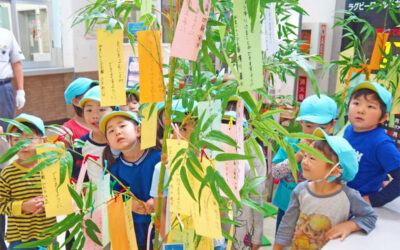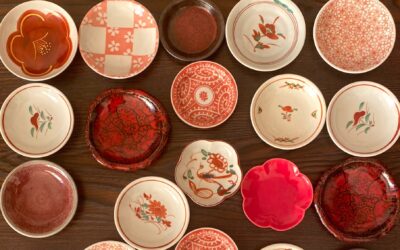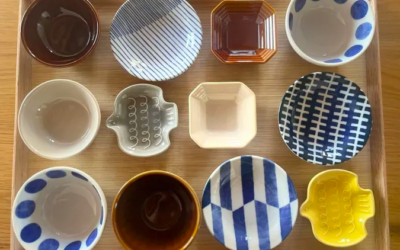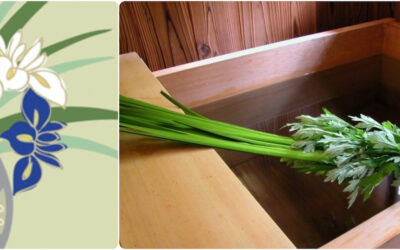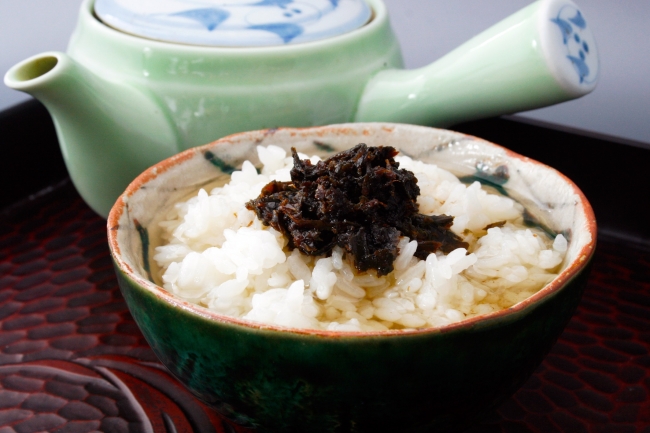
Try making OCHA-ZUKÉ in your kitchen
The two major components are: BROTH and TOPPINGS.
Start by picking a broth that will define the character, and general flavor profile, of your ocha-zuké. The recipe for making KELP-ENRICHED TEA BROTH offers several options for using different teas such as smoky hōji cha or toasty genmai cha in addition to delicate sencha. Or, you could choose Standard Sea Stock (that will add ocean aromas) or Kelp Alone Stock (provides a neutral backdrop for other flavors).
Next, choose your toppings.
Salmon Flakes are one popular choice. The salty-with-a-hint-of-sweetness fish pairs well with fresh herbs such as mitsuba or shiso. If you wanted to give your bowl a global twist try non-Japanese herbs such as fresh basil, dill, chives or cilantro.
Similarly, the sour punch of uméboshi plums goes well with herbs. The plums can also be nicely balanced with briny, shiny black Nori Tsukudani. or Second Chance Tea Topping (tsukudani made from spent tea leaves).
Other topping items that can be made ahead and store well for several weeks in the refrigerator are: Kelp and Mushroom Relish (pg 110 WASHOKU), Rice Friends (pg 152 KANSHA).
And you can always crumple toasted nori (or cut it into thin slivers with scissors).
Yet more topping items can be purchased at Asian groceries. Rice puffs called bubu araré can add crunch (like croutons). Calcium-rich chirimen-jako (dried miniscule sardines) add extra nutrition; the same protein-packed, teeny dried sardines seasoned with tongue-tingling sanshō berries add spiciness. If you don’t see these fish items on the shelf, look in the refrigerated section. Naturally air-dried fish have a relatively short shelflife and most groceries will refrigerate or freeze them.
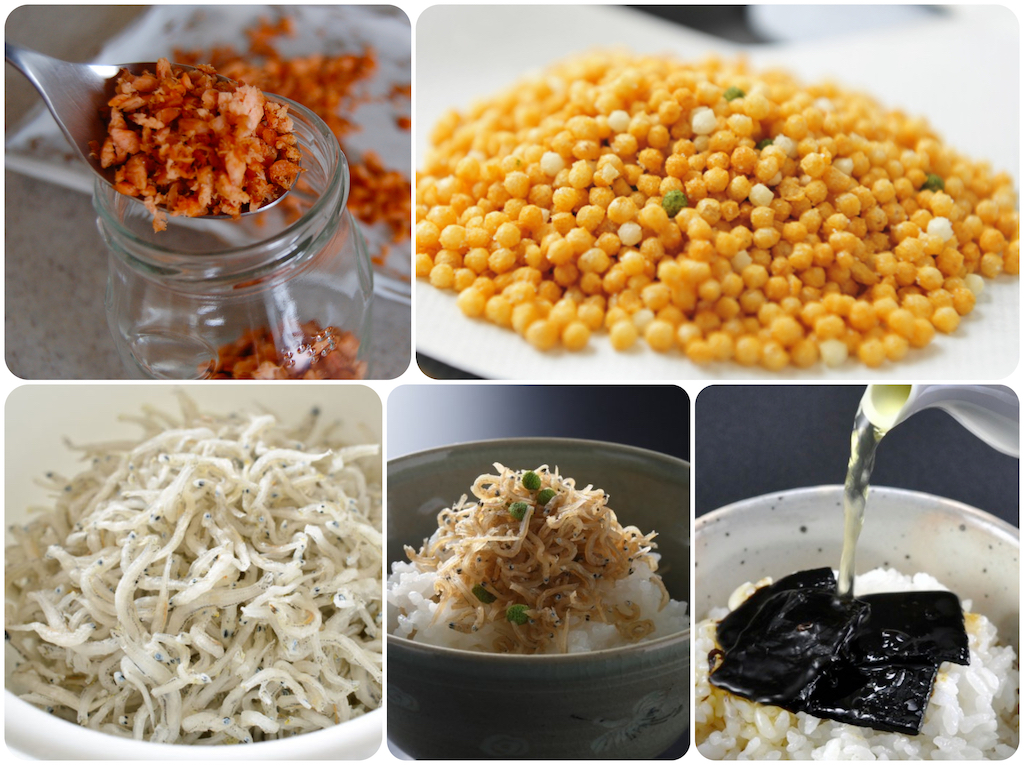
Toppings
Clockwise from top left: salmon flakes, bubu araré (crunchy rice puffs), kelp (repurposed into tsukudani), jako (teeny dried sardines) seasoned with sanshō berries, plain chirimen-jako (dried miniscule sardines).
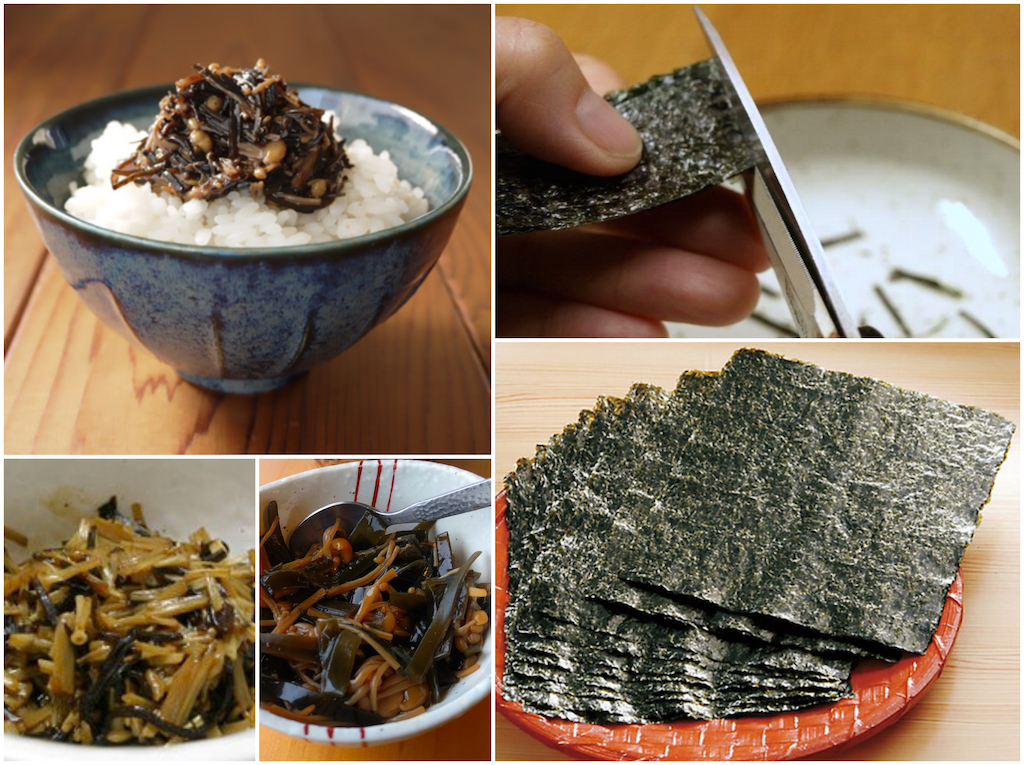
Toppings
Clockwise from top left: domburi filled with rice and topped with Kelp and Mushroom Relish, cutting strips of toasted nori with scissors, full sheets of toasted nori, Kelp and Mushroom Relish (tsukudani) made with slender enoki mushrooms (LOTS of mushrooms, less kelp in final photo).

